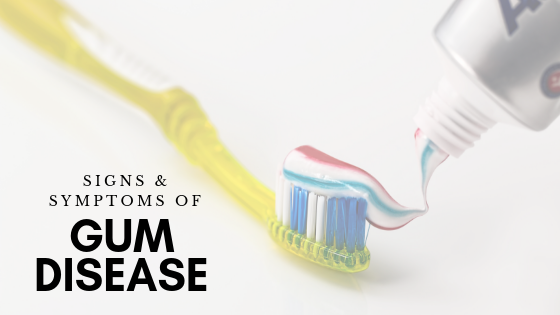Gum disease is a very common term in the dental world and if you’re worried you might have gum disease, it is quite common to feel that way – Gum disease affects half of the adult population and one of the most common reasons why people visit the dentist. It does have serious consequences for your dental health. It’s a chronic condition that can grow rapidly into something more and surprisingly, it can be easy to overlook. However, know the signs and symptoms as it can have serious consequences such as the leading cause of tooth loss for adults.
Stage one: Plaque attacks
Gingivitis is one of the biggest culprits and first warning signs of possible gum disease. It refers to the early stages of gum disease. This is an inflammation of the gum tissue caused by the build up of plaque formation on your teeth or gumline. If you are diagnosed with gingivitis, the treatment options are minimally invasive. With professional dental cleaning and regular regiment of brushing and flossing, gingivitis can be treated and reversed.
Stage Two: Bone Burrowing
Periodontitis is the more advanced type of gum disease. While periodontitis can still be treated, more invasive techniques such as scaling or deep cleaning of the surface of your roots may need to be performed. However, this form of advanced gum disease doesn’t only affect your gums, it can also cause tissue and bone loss throughout the mouth.
Here are some symptoms of gum disease:
1. Bleeding Gums
As a rule, gum should not bleed when you brush and floss. If you do not floss on a regular basis, bacteria build up below the gums may cause your gums to bleed each time you brush. You can also irritate it when you brush your gums. If the problem persists, the bleeding usually gets worse.
You may also find that red or swollen gums may also accompany bleeding. Tooth sensitivity may also occur as well due to gum recession from infected, bleeding gums. It’s important to continue to floss as we know that the plaque that causes gingivitis will destroy the fibers that attach your gum tissue to your teeth and causes that inflammation in your gums.
2. Gum Recession or Gum “pocketing”
Does it look like your gums are starting to get longer? It may appear to be this way due to the gums around it receding away. Gum recession is usually a sign that your gum disease is progressing.
When this happens, the gums will continue to recede and in the later stages of gum disease, these pockets become too deep. The problem is that it then becomes difficult to remove the food by brushing and flossing. This causes the pockets to become progressively deeper.
Unfortunately, it is important to note that gum recession is also considered to be a normal part of aging. The gum line tends to recede and expose more of the surface of our teeth. Now it can actually be prevented as well.
Gum recession and pockets are not the same: Gum recession is the loss of gum tissue from around the teeth, exposing the root – while gum pockets are the space between gum and teeth.
3. Tooth sensitivity and Bad Breath
Gum recession or pocketing can lead to tooth sensitivity. In these cases, this may be a sign of gum disease. The exposed root makes the tooth more susceptible to decay, wear in the root surface, tooth sensitivity, and potential tooth loss. If your symptoms are worsening, it’s time to see your dentist. Another sign may be bad breath which is caused by the bacteria that is sitting in your mouth.
Generally, it’s important to your oral health to have good dental practices such as flossing and brushing your teeth at least twice a day. Keep your guard up even if you think your mouth looks spotless. You may still have gum disease even if you don’t display any of these signs or symptoms. To give yourself the best chance of fighting the disease, be aware of the common signs and keep up with your regular dental check ups which are essential for prevention and early detection.

